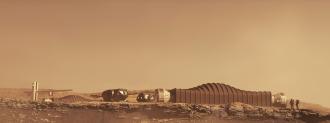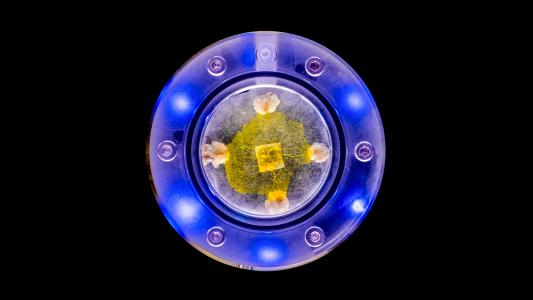NASA is on the hunt for people to live in a simulated Mars habitat for one year so it can preemptively address problems astronauts might face while actually living on Mars.
The challenge: If a piece of equipment breaks or something else goes wrong aboard the International Space Station (ISS), NASA can reach the station within days. It won’t have that luxury once astronauts are living on Mars, though, because the Red Planet is usually about 140 million miles away.
Missions to the ISS are also only about six months long, on average, and it’ll take longer than that for astronauts to even reach Mars. Right now, NASA doesn’t know what sort of impact a long-duration space mission might have on its astronauts.
“This is the highest-fidelity simulated habitat ever constructed by humans.”
Jason Ballard
The idea: By creating a Mars habitat on Earth, NASA hopes to minimize any problems astronauts might encounter while living on Mars and give their missions the best possible chance of success.
“The analog is critical for testing solutions to meet the complex needs of living on the Martian surface,” Grace Douglas, lead scientist for NASA’s Advanced Food Technology research effort at NASA’s Johnson Space Center, said in a news release.
“Simulations on Earth will help us understand and counter the physical and mental challenges astronauts will face before they go,” she continued.
Living on “Mars”: NASA is calling the project the “Crew Health and Performance Exploration Analog,” and it will consist of three year-long simulations.
NASA will throw challenges, such as equipment failures, at participants to test their response.
During each simulation, a crew of four people will live in Mars Dune Alpha, a 3D-printed, 1,700-square-foot facility at NASA’s Johnson Space Center in Houston, Texas, that features private crew quarters, as well as stations for conducting experiments, growing food, and more.
“This is the highest-fidelity simulated habitat ever constructed by humans,” Jason Ballard, CEO of ICON, the company building the facility, said in a press release.
Are you in? During the experiment, crew members’ tasks could include anything from controlling robots to simulating spacewalks in VR. NASA also plans to throw challenges, such as equipment failures, at participants to test their response.
If that sounds like something you’d be into, NASA is now accepting applications from people interested in “living on Mars” for a year without actually leaving the Earth.
Applicants must be healthy U.S. citizens between the ages of 30 and 55. They must also meet certain educational and employment requirements, such as a master’s degree in a STEM field or military officer training.
The selection process could take up to 13 months, according to NASA, and the plan is for the first simulation to begin in the fall of 2022. Participants will be compensated for their time, but NASA hasn’t said just how well being a fake Martian colonist pays.
We’d love to hear from you! If you have a comment about this article or if you have a tip for a future Freethink story, please email us at [email protected].






